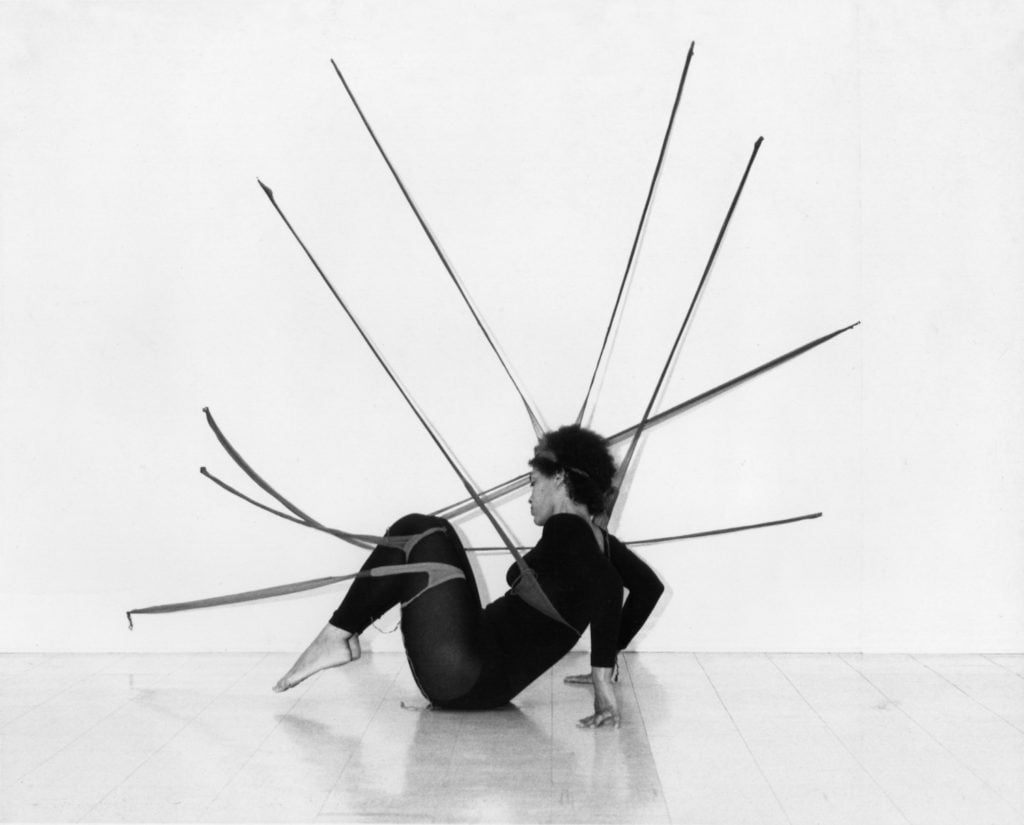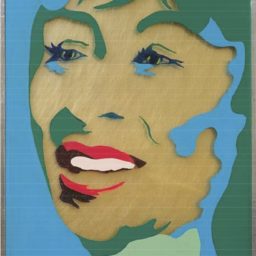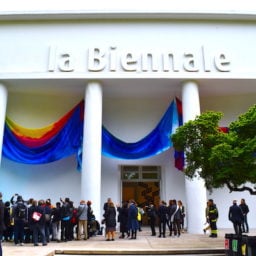As a sculptor, Senga Nengudi (b. 1943) is well-known for one material in particular: nylon pantyhose, variously stretched, tied, and filled with sand, made over into abstracted renditions of the body. Yet this instantly recognizable artistic signature can also mask the depths of her work. Performance has been as fundamental to Nengudi’s practice as her materials. Her just-opened show at Art + Practice in L.A., “Head Back and High,” reveals an artistic process fueled by her associations with a tight community of artists who pushed the boundaries of black contemporary art just as surely as she herself stretched nylon into new and challenging forms.
In particular, Nengudi’s collaborators included the members of Studio Z, a fluid collective of artists, musicians, and filmmakers that included David Hammons, Maren Hassinger, Ulysses Jenkins, Houston Conwill, Franklin Parker, and RoHo. In various configurations, these figures regularly engaged in “spontaneous actions” around L.A. in the 1970s. At a time when the Black Arts Movement remained focused on figurative, representational ideas of black art, and black artists were also viewed as a monolith by the mainstream art world, this environment of experimental collaboration opened up new avenues for material and conceptual exploration.
The Art + Practice show collects work that Nengudi describes as “stationary performance pieces.” These include photographs, her signature “R.S.V.P.” series of pantyhose installations, and video installations that illustrate how performance and the creative synergy of collaboration not only brought her work to life but were critical to opening up new avenues for her own practice.
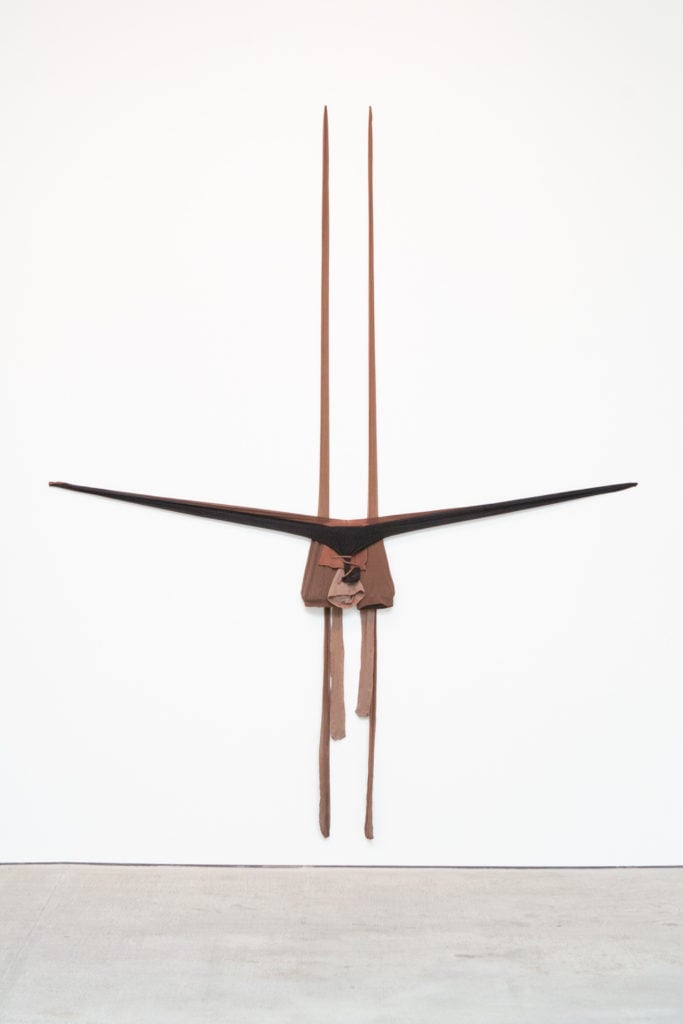
Senga Nengudi. A.C.Q. (III) (2016-2017). Refrigerator parts, nylon pantyhose. Photo by Natalie Hon. Courtesy of Lévy Gorvy Gallery, New York and Thomas Erben Gallery, New York.
Nengudi’s creative limits were tested early in her career as she struggled to find a receptive audience. She was shunned by Abstract Expressionists, ignored by feminists, and was an outlier in revolutionary circles. The artistic influences she drew upon were vast: religious ritual, Gutai, African ceremony, improvisational jazz, and Fluxus performance were all creative guideposts in the work she created with members of Studio Z in 1970s Los Angeles.
Hammons hosted many of Studio Z’s performances in his studio, an old converted dancehall. The space became a creative laboratory where artists could test concepts freely, without question or judgement. Frequently, they extended this experimentation to spontaneous sites around the city.
“We would meet in different spaces around L.A.—empty amphitheaters, empty swimming pools, abandoned buildings, parks, construction sites and gardens and perform and play out our concepts,” Nengudi remembered in 2009. “Then we would return to our separate studios charged up by our encounters.”
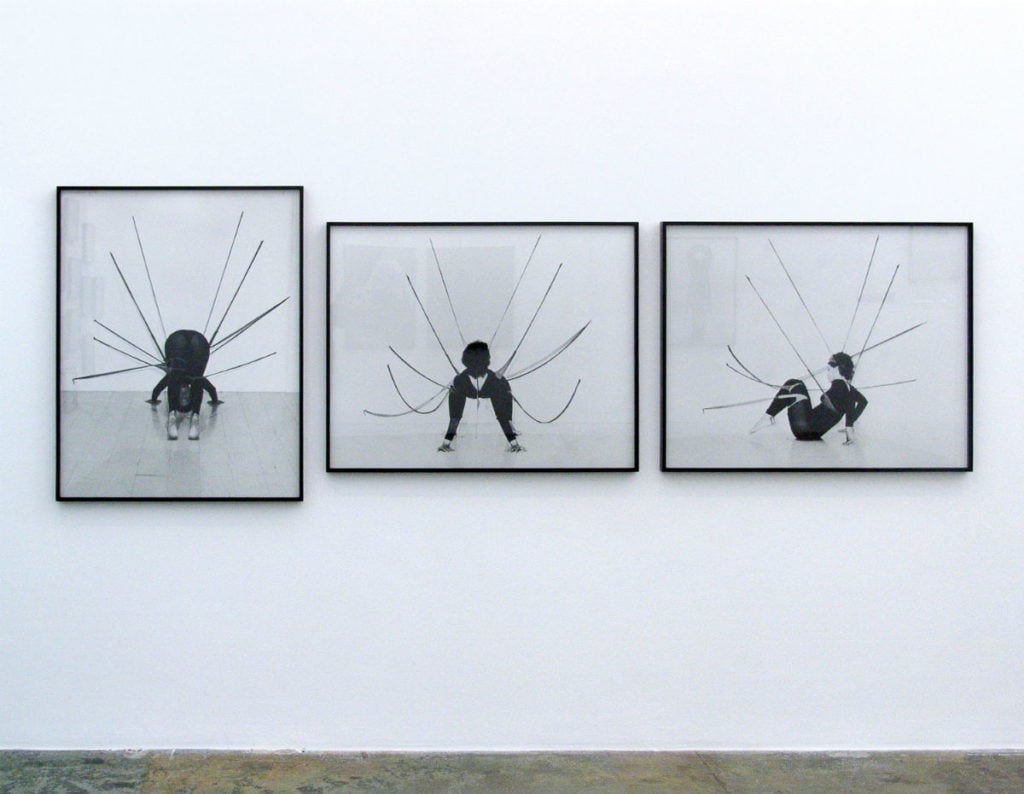
Senga Nengudi. Performance Piece (1977), featuring Maren Hassinger. Black and white photographs. Photographer: Harmon Outlaw. Courtesy of Lévy Gorvy Gallery, New York and Thomas Erben Gallery, New York.
In particular, her creative partnership with fellow sculptor Maren Hassinger catalyzed new possibilities to engage with material in performance. Along one gallery wall in Art + Practice, a trio of black-and-white photographs depict Hassinger’s 1977 improvisational performance with Nengudi’s “R.S.V.P.” sculptures in a form of dialog grounded in the musical tradition of call and response: Nengudi’s sculptural request to “respond please” is met with Hassinger’s choreographic reply as she smoothly glides, weaves, and contorts her body through a nylon maze of stretched lines, shapes, and tensions created by the material.
The photos lead to the back of the gallery where a video documents a 2014 performance in which Hassinger and Nengudi continued their artistic dialogue. In a black skirt, Hassinger recreates shapes suggested by Nengudi’s own “R.S.V.P.” performance in 1976. The choreography is accompanied by a cellist, shown seated next to Nengudi herself, who leads a small gathering of gallery visitors who are slowly rattling percussive sand shakers in a hypnotic, improvisational wave of sound.
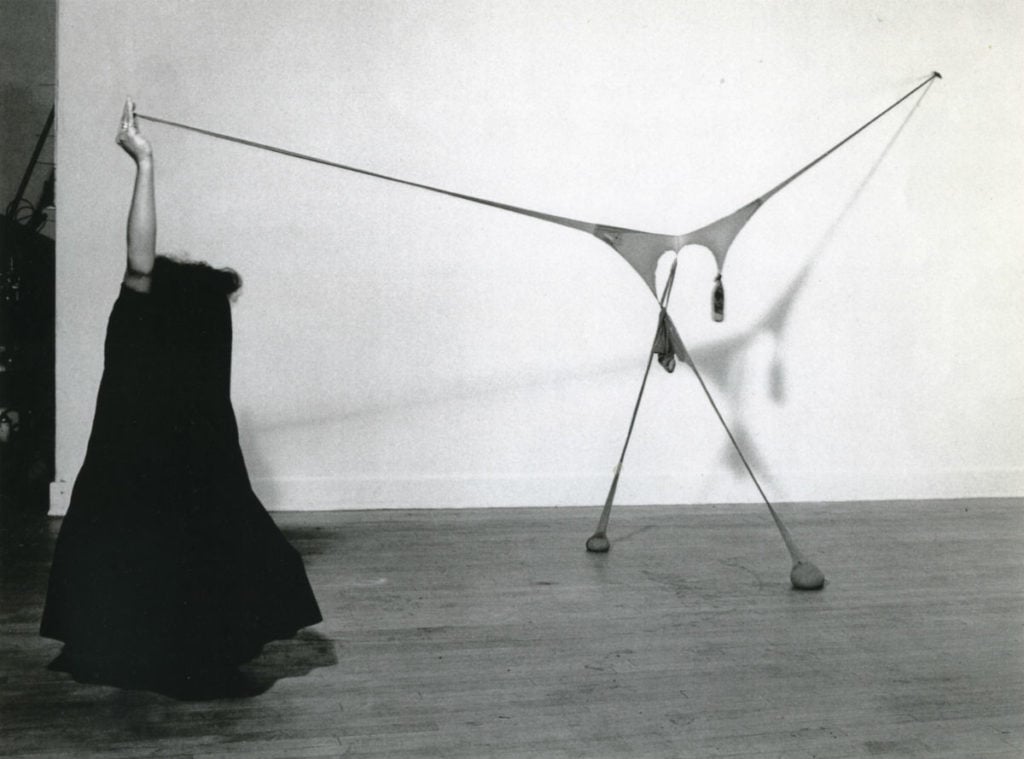
Senga Nengudi. Studio performance with R.S.V.P. (1976). Black and white photograph. Photographer: Ken Peterson. Courtesy of the artist; Thomas Erben Gallery, New York; and Lévy Gorvy, New York, London.
This use of improvisation, music, and ritual harken back to Nengudi’s seminal Ceremony for Freeway Fets performance of 1978, which took place on a dirt mound beneath a freeway underpass in Downtown Los Angeles. The terrain, sparse foliage, and smattering of homeless onlookers who inhabited the sheltered crevices of the underpass provided Nengudi with the visual backdrop for a performance piece that was a meditation on relationships.
Members of Studio Z were outfitted in nylon headpieces and costuming that symbolized male and female spirits who danced and performed to a musical accompaniment of horns, percussion, drums, and a flute. Nengudi, Hassinger, and Dave Hammons animated her nylon sculptures through dance and kinesthesia in an improvisational performance that evoked a West African aesthetic.
Hassinger recalls the spontaneity of that moment in art historian Kellie Jones’s South of Pico: “It was this burst of insane, from nowhere, kind of energy… I associate that kind of timing, that kind of surprise punch with African theatrical tradition.” That now-celebrated performance is not expressly represented in the new exhibition, but echoes of its symbols can be found in some of the knotted nylon sculptures. In R.S.V.P Reverie-A (2011), an arched wire frame is adorned with a crown of twisted and braided nylon knots that resembles the headdresses worn in Ceremony for Freeway Fets.
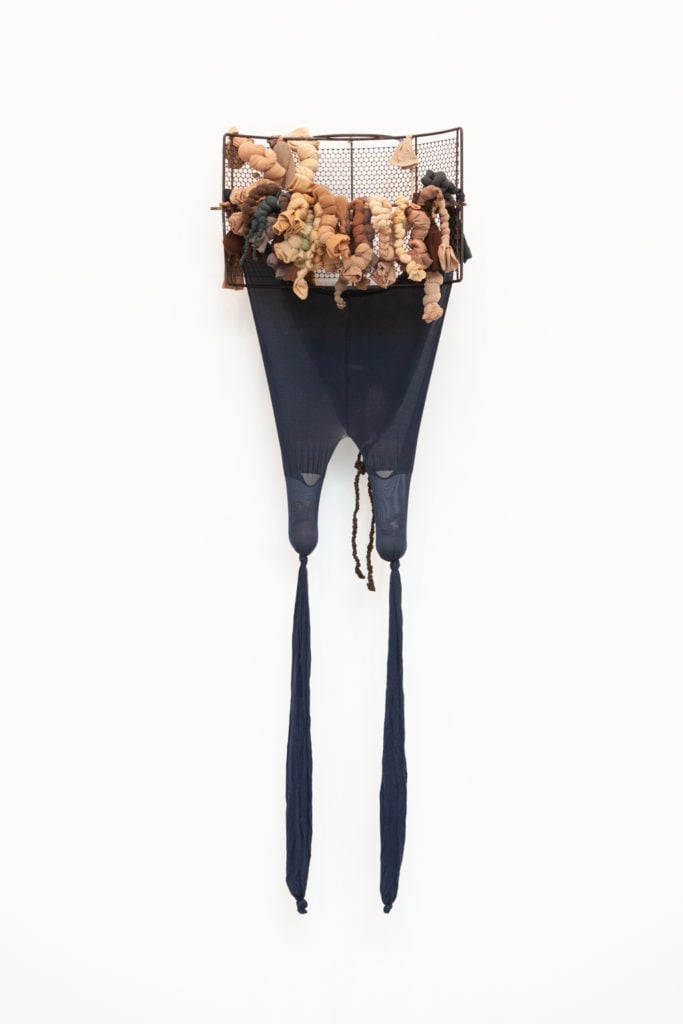
Senga Nengudi. R.S.V.P. Reverie – A (2011). Nylon mesh, sand, found wire object. Photo by Natalie Hon. Courtesy of Lévy Gorvy Gallery, New York and Thomas Erben Gallery, New York.
The stretched nylon works of Nengudi’s “R.S.V.P.” installations were originally inspired by the physiological changes in her body after experiencing childbirth. Current iterations, on the other hand, have shifted to examine the emotional changes we experience as we age.
Consider A.C.Q., a collection of sculptures originally shown in the 2017 Venice Biennale. Nengudi plays with hard industrial materials, juxtaposing the rigidity of metal air conditioning components with her stretched nylon. The harsh, rusted machinery isn’t merely a foil for the pantyhose; it shapes and manipulates the material, as these metal mazes become stand-ins for life experiences that shape and mold us.
In this work, she moves from the elasticity of the body to the malleability of the mind, offering abstracted renderings of the human psyche as it navigates the obstacles of various stages of life, from parenthood, to career, relationships, and elder care. Nengudi threads nylon through pipes and stretches pantyhose to create forms that look like musical instruments with strings that tremble in the wake of a breeze from a nearby fan. The tension and the movement suggest that resilience and fragility can exist within the same moment.
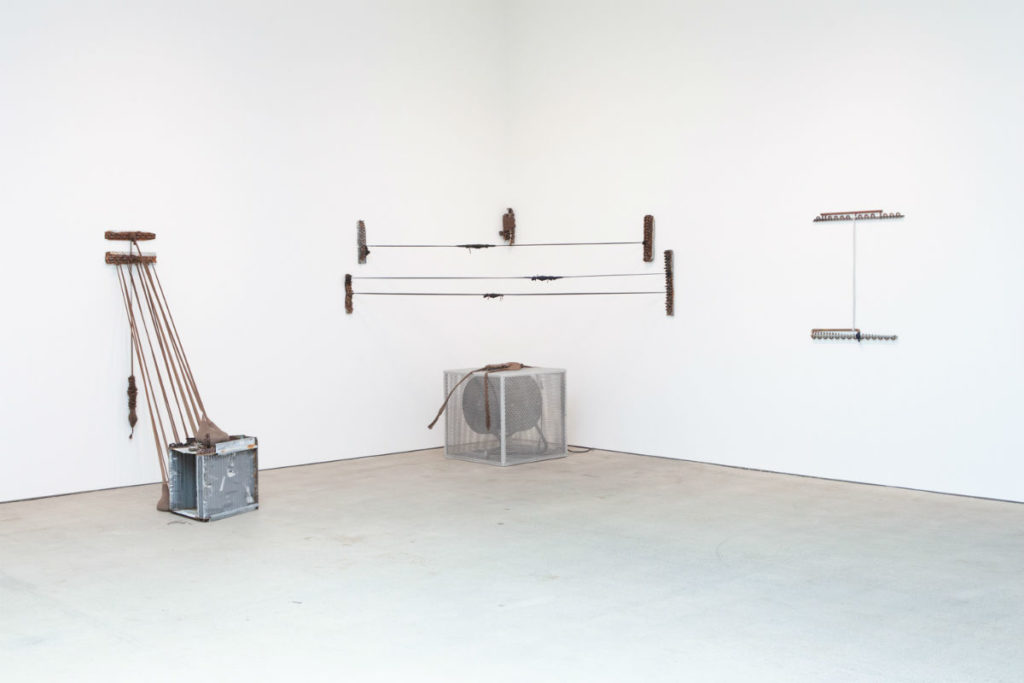
Senga Nengudi. A.C.Q. (I) (2016-2017). Refrigerator and air conditioner parts, fan, nylon pantyhose, sand. Photo by Natalie Hon. Courtesy of Lévy Gorvy Gallery, New York and Thomas Erben Gallery, New York.
Nengudi also manages to embed a political subtext into the show as well. In a corner above the fan in A.C.Q., small bundles of sand are tied to lines of nylon. These resemble barbed wire, stretched between the gallery’s walls to mark off a small refrigerator component nestled into the corner.
According to Cecilia Wichmann, assistant curator of contemporary art at the Baltimore Museum of Art, the installation is an homage to sculptor Melvin Edwards, whose work fuses abstract sculpture with historical messages. Edwards’s Corner for Ana (Scales of Injustice) installation, first shown at the Whitney in 1970, features a small scale that’s shielded behind a large curtain of barbed wire.
Scales of Injustice was recently reinstalled following the horrific 2017 drowning death of a Gambian migrant in a Venetian canal that drew widespread scrutiny when footage showed onlookers seeming to mock the dying man. Nengudi’s own subtle nod to Edwards’s work continues the work of commemoration, casting a world-weary shadow over misguided notions of progress. It is also another version of the artistic “call-and-response,” picking up a symbol that a colleague has put out there, responding to its energy in her own language.
Senga Nengudi’s performance objects exist in dual artistic modes, equally as byproducts of performance art and as site-specific sculpture. The work is charged with the energy of artistic collaborators who carved out environments where their creative expression would thrive. But its genius is how the sculptures can be both so intimately connected with the moment of their making and so wonderfully open, letting her viewers reactivate them in their imagination in new ways, carrying their energy beyond their moment and into their own lives.
“Head Back and High: Senga Nengudi, Performance Objects (1976-2017)” is on view at Art + Practice in Los Angeles, through August 25, 2018.
Colony Little is the creator of Culture Shock Art.
